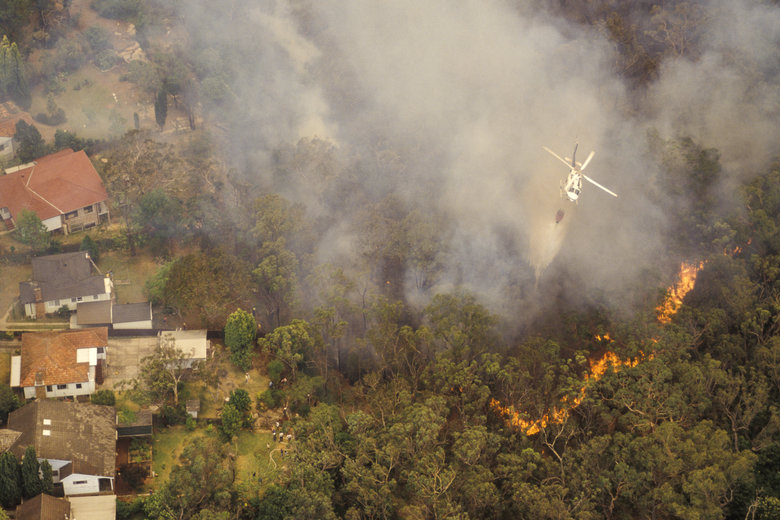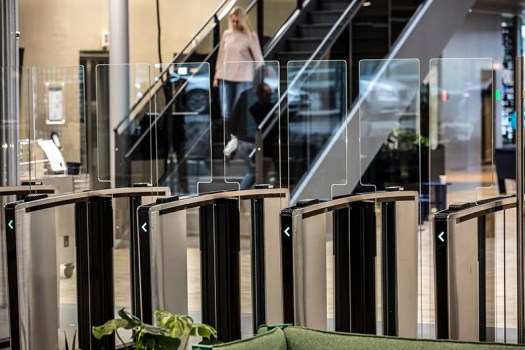
Don’t wait for a crisis – say rural and regional councils who’ve experienced them.
Gladstone, Noosa, Tablelands, Shellharbour, Campaspe, Coffs Harbour – What do these Councils have in common? If you said forward thinking local governments who’ve embraced SaaS as part of their digital transformation, you’d be half right.
They’re also councils operating in regional and rural areas of Australia and, as such, are accustomed to having to scenario plan around the occasional wild weather event, whether they are the famous droughts and flooding rains of our wide-brown land—or worse.
Last summer’s once-in-100-year bushfires had many local councils around the country on high alert and would no doubt have driven most to review their crisis management plans had not COVID-19 put them to the test in real time.
At Noosa Shire Council, ICT Manager Justin Thomas shared on LinkedIn a vote of thanks to software solution vendors which were helping the council’s team members continue to deliver services while working away from the office during the bushfire events, including TechnologyOne.
Mr Thomas later told followers on LinkedIn that his team had seen requests for IT support from within the council double in the month of March as the organisation moved to set up team members to work remotely as a result of the Coronavirus situation.
While the level of disruption from COVID-19 is unprecedented, for many local governments, particularly those serving communities in the north of the country, planning for disruptive events is a common practice—and is leading them to cloud-based solutions.
At Tablelands Regional Council, based in Atherton, Senior Business Services Officer Sarelle Sinclair says the risk of severe weather events was a key part of the reason for the recent decision to move parts of its information technology infrastructure to the cloud.
“We wanted to modernise our systems and overcome limitations such as ageing infrastructure, and the risks of operating in a remote, cyclone-prone area. The purpose of all of that was improved stability, mobility, speed and service—and resilience,” she says.
So, does hands-on experience with some of the many challenges nature can throw at us influence communities—and the local government authorities which represent them—in terms of their attitudes to risk management?
“It is certainly a factor,” says Ed Chung, CEO of TechnologyOne, whose software powers many of Australia’s local governments. “Councils in regional and rural areas by default need to have a level of independence and self-reliance.”
“We work with local government authorities all across Australia, New Zealand and the U.K. And we’ve been in this business for thirty-three years. That’s enough time to be able to observe some general trends.”
“Many of our local government customers cover non-metropolitan areas. By and large, we find they run leaner operations, which usually mean less resistance to change, so they tend to be early adopters of technologies that help keep the lights in a crisis.”
Mr Chung says that in rural and regional areas, Council Mayors tend to become the community focal point in a crisis. That responsibility also tends to focus the thinking of council executives, leading them to invest in business continuity planning.
“Geography also plays a role. When you’re living and working at some distance from the ‘Big Smoke’ you know that help, when it comes, is going to take a while. That tends to foster a level of self-reliance in the people running rural and regional councils.”
In Queensland, the State Government has a program called Get Ready Queensland, a year-round, all-hazards, resilience building initiative coordinated by the Queensland Reconstruction Authority to help communities prepare for natural disasters.
The campaign’s “Be Prepared” toolkit says local councils are the first point of call for community members to turn to for information during a natural disaster; anything from evacuation centre locations, river heights, road conditions, to power and phone outages.
“That responsibility means councils themselves have to think long term about their ability to provide those services in an emergency. That invariably leads to business continuity planning and, these days, that leads them to cloud-based solutions,” Mr Chung says.
“’Be prepared’ is not just a motto for scouts. It applies to infrastructure too,” he says.
TechnologyOne’s harsh lesson
TechnologyOne learned this the hard way. Just under 10 years ago, when the company was already well established and a leading enterprise software provider, the Brisbane floods of 2011 taught the company a valuable lesson about the vulnerability of on-premise software.
“They were a wake-up call,” Mr Chung says. “We had to evacuate our head office in Fortitude Valley. And while the majority of systems stayed available to staff, our 300 strong research and development (R&D) team was brought to a standstill. We had two state-of-the-art datacentres and a very solid disaster recovery strategy, but for three days our service was down and none of our customers could access their data.”
For a 20-year-old global company, it was a wake-up call.
“That was the point we realised our business was bigger than running datacentres,” Mr Chung says.
“We basically sat down and said, ‘never again’. Cloud technology was already on the horizon, but the floods gave us the push we needed to accelerate the move. We set out to build the most reliable, best-performing enterprise software service we could.”
“The biggest lesson we took away from this was that if your applications and data are in the cloud and not onsite, your people can work from anywhere, on any device, at any time. It’s a more flexible model of computing, with its own built in disaster recovery.”
The move away from the traditional operating environment has also had a positive impact on TechnologyOne’s culture in terms of greater collaboration, sharing, mobility and flexibility—benefits which are all inherent in a cloud-based offering.
“And now we have successfully navigated the complexities of cloud migration, we are very confident we can save our customers a lot of that pain if and when they choose to move,” Mr Chung said.
That experience was front of mind to many at TechnologyOne as Australians moved into COVID-19 lockdown earlier this year.
Forward thinking, born out of the disruption of 2011, allowed TechnologyOne to continue to complete new software projects for customers—and start new ones, all while the majority of its staff were working remotely.
In the early days of the crisis, while it was taking care of the safety of its people and moving its workforce of 1200 to remote work, the company also launched a package of free tools for customers specifically designed to help them weather the crisis. In particular, free analytics dashboards have proved popular, with more than 20 customers taking up the package including, notably several rural and regional councils.
Renewed focus on planning ahead in NSW
In 2019, the NSW Auditor General’s Local Government Report recommended all of the State’s councils do more to ensure all IT risks are identified and appropriately managed. It found many did not have formal business continuity and disaster recovery policies.
“Any discussion on these topics tends to lead to a conversation about cloud, SaaS and digital transformation. Few councils are in the position of being able to fund a second, just-in-case datacentre for disaster recovery purposes,” Mr Chung says.
“It can be a challenge to map out that journey on your own. We’ve done it many times now and have mature, tried and tested processes. But, of course, every council is different. We usually advise that any journey starts with understanding where you are now,” he says.
What’s next
It is that recognition of the need to look forward to continually invest in technology, and to use crises like these as ‘teaching moments’ for the organisation, that TechnologyOne, a veteran of 30 years, says are the lessons to learn from COVID-19.
Those organisations which have invested in technology are been the ones best able to not only weather this crisis but to help their customers. For example, imagine a council attempting to support its community through the crisis if the council’s leadership couldn’t get access to the systems which tracked their finances.
It’s by no means certain that we will not see a second or third wave of COVID-19 disruption before health authorities are able to develop effective responses to the virus. With that in mind, now is not the time to turn away from innovation.
Instead, it’s time to double down on a move to SaaS – a critical step in the digital transformation journey. We need to recognise that the pace of change is now being driven by external factors and those are much less predictable than we’d previously considered.
The sense of urgency that allowed us to move mountains in March needs to be maintained as we move out of crisis mode. We also need to recognise remote working will undoubtedly to play a bigger role than before.
It’s time to learn the lesson our colleagues in regional and regional councils already know. You don’t wait for the bushfire till the bush fire is upon you. Now’s the time to be investing in the tools to help you fight the next fire.
Visit TechnologyOne for more.
Comment below to have your say on this story.
If you have a news story or tip-off, get in touch at editorial@governmentnews.com.au.
Sign up to the Government News newsletter






Garth Daddy on: War memorial contracts fudged, audit finds
Roger Buhlert on: New VLGA appointment vows to lift governance standards
Roger Buhlert on: APS hybrid work is here to stay, report finds